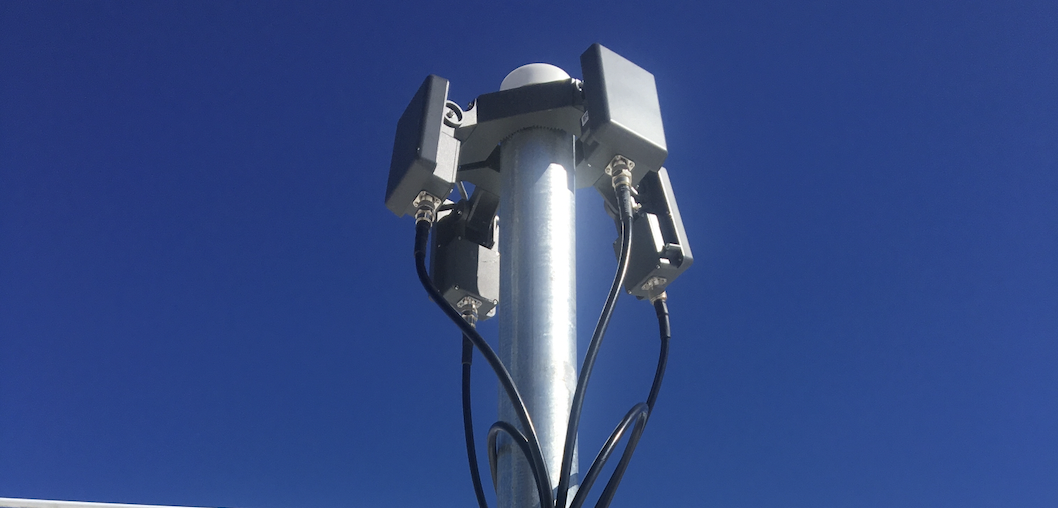As North American cities prepare to host the largest international sporting events in history, security is at the top of every city, state, and stadium official's mind. The complexity is immense, but one threat has evolved from a niche hobby into a significant, recognized security and liability crisis: the unauthorized drone.
The federal government now officially recognizes this threat. In late October, FEMA announced over $1.1 billion in new funding, including a $500 million grant program specifically for Counter-Unmanned Aircraft Systems (C-UAS) to help state and local authorities combat drone threats, particularly for World Cup 2026 host cities.
This isn't just another security upgrade; it's a fundamental shift in the legal landscape. The availability of this funding and technology means that "I didn't know" or "it's too expensive" are no longer valid defenses. The threat is now officially recognized by the government, and so is the solution. For venue owners, this means the era of airspace ignorance is over.
The Threat is No Longer Hypothetical
The question is no longer if a drone will disrupt a major event, but when. The U.S. Cybersecurity and Infrastructure Security Agency (CISA) states that unauthorized drone flights over sporting events are a "common occurrence."
This isn't a vague warning; it's a measurable crisis. The NFL's Chief Security Officer recently reported that unauthorized drone flights over stadiums during games jumped to 2,845 incidents in 2023, a significant increase from the previous season. Games have been stopped mid-play at NFL games in Baltimore and Seattle, and at major European soccer matches, forcing players off the field.
The problem isn't just a sophisticated state actor. It's the "careless, clueless, or criminal" operator with a commercially available drone. And the "threat" isn't just a bomb.
- Disruption: A drone dropping protest leaflets or a simple banner can halt a multi-million dollar broadcast and create a media firestorm, as seen at an NFL game in 2023.
- Data Theft: A drone equipped with a simple Wi-Fi hacking device can park itself outside a press box or VIP suite to steal credentials and sensitive data.
- Panic: The mere presence of an unauthorized drone buzzing over 80,000 fans can, and has, caused crowd anxiety and panic, leading to dangerous stampedes.
- Physical Harm: The risk of a simple battery failure causing the drone to fall into the stands—or a drone being used to deliver a malicious payload (chemical, biological, or explosive)—is too high to ignore.
The Ticking Time Bomb: Venue Liability
This is where the threat moves from the security office to the courtroom.
Under a legal concept called "premises liability," venue owners have a "duty of care" to provide a reasonably safe environment for their fans and invitees. Ten years ago, a drone incident probably wasn't a "foreseeable risk."
Today, with thousands of documented incursions, federal agencies like CISA issuing specific warnings, and a new $500 million grant to solve the problem, that argument is indefensible. A drone incident is now one of the most foreseeable risks a stadium faces.
Ask yourself these questions:
- When an injury or panic-related incident does occur, what will your answer be when the first question in court is, "What steps did you take to detect and mitigate the foreseeable threat of unauthorized drones?"
- Do you believe a "No Drone Zone" sign will stop a malicious actor? Those signs only deter law-abiding hobbyists.
- How will you defend your organization against a negligence claim when you failed to use available, proven, and now federally funded technology to mitigate this known risk?
The financial fallout isn't just the lawsuit. It's the soaring insurance premiums, the reputational damage, and the potential for event cancellation.
The Solution: From Passive Liability to Active Defense
You cannot stop a threat you cannot see. The first and most critical step in any C-UAS strategy—and the first step in protecting yourself from liability—is knowing your airspace.
This is the foundation of airspace awareness.
A comprehensive detection platform like AirSight provides real-time, 3D situational awareness that turns an unknown aerial threat into manageable data. It is the "reasonable step" that demonstrates you are actively managing your duty of care.
AirSight isn't just drone security; it's a legal and financial shield.
- It proves you are not negligent. By deploying an active detection system, you are taking a tangible, reasonable, and industry-standard step to protect your attendees.
- It provides an immutable data log. If an incident occurs, you have a precise record of what happened, where the drone came from, and how your team responded—invaluable data for law enforcement and your legal team.
- It turns a security gap into an operational tool. You can identify and stop the "clueless" hobbyist before they disrupt the game, while simultaneously building a digital case against the "criminal" actor.
Don't Wait for the Incident
The threat of unauthorized drones is real. The legal exposure for venue owners is significant. And now, the federal government has provided a massive grant program to help you solve it.
The era of airspace ignorance is over. Securing your stadium's airspace is no longer an optional upgrade; it's a core component of your legal, financial, and risk management strategy.
Before you have to answer to a judge, answer this: Do you know what's flying over your fans?
Contact AirSight today to schedule a consultation and learn how our airspace awareness platform can protect your venue, your fans, and your bottom line.











